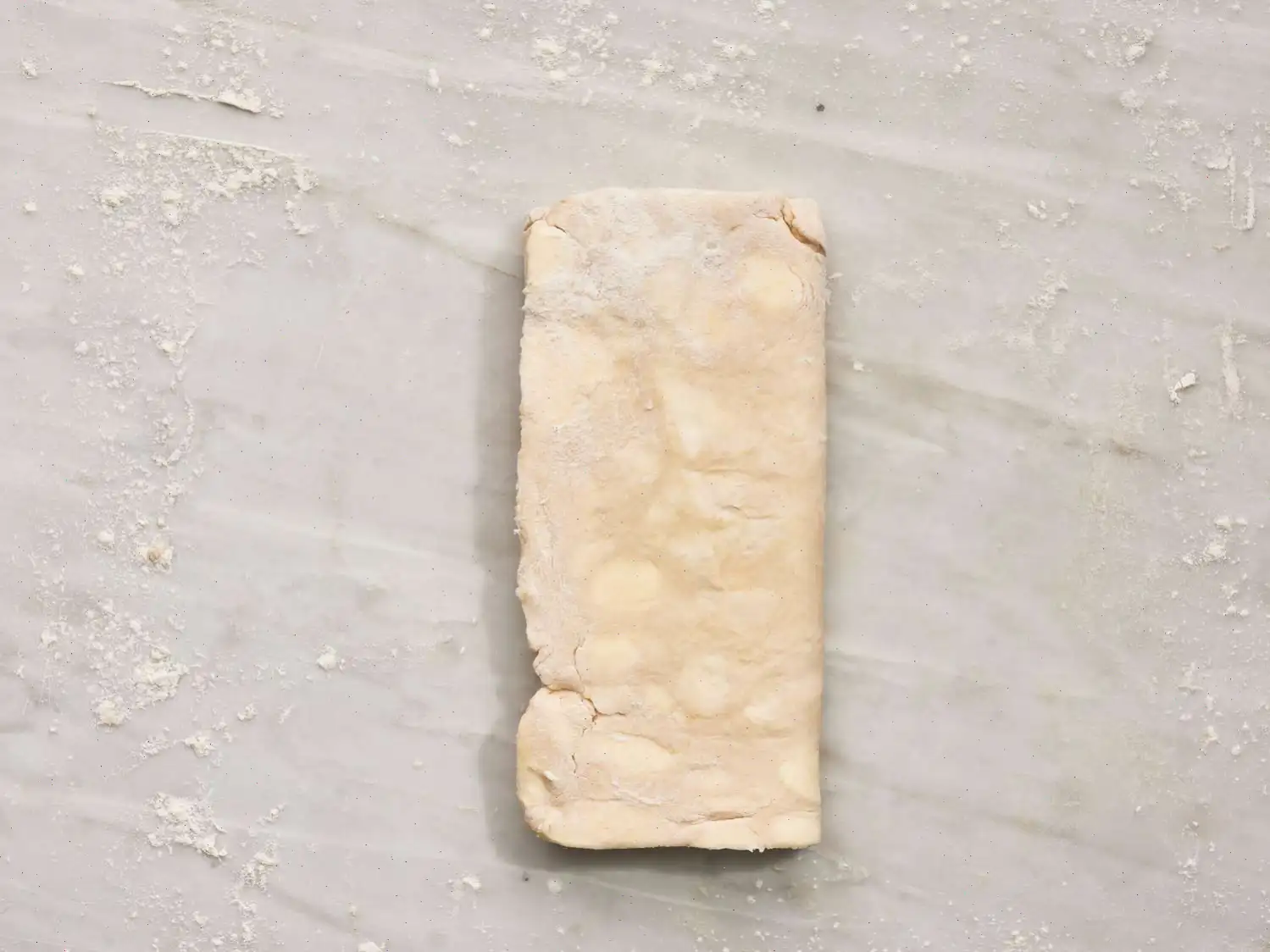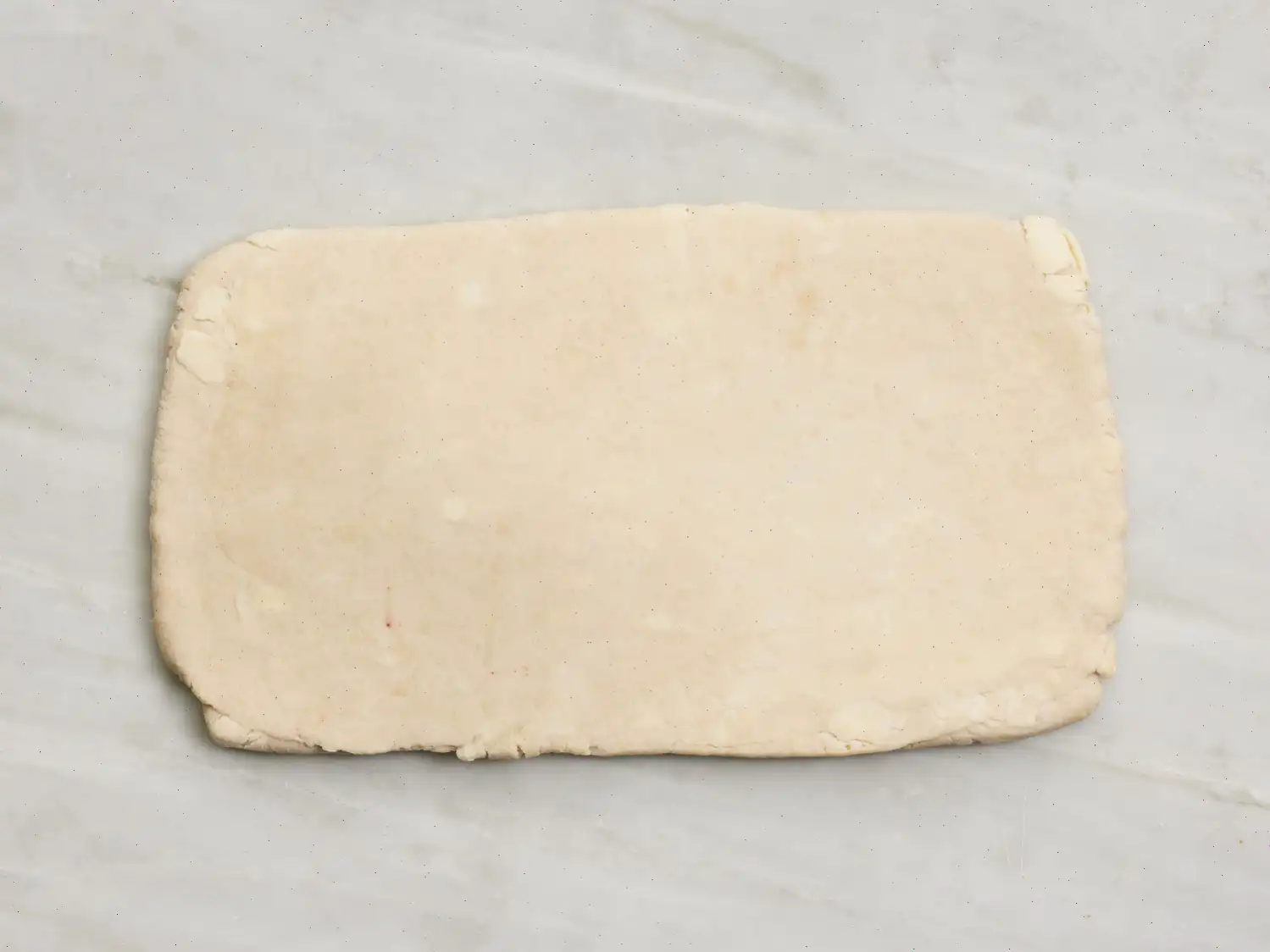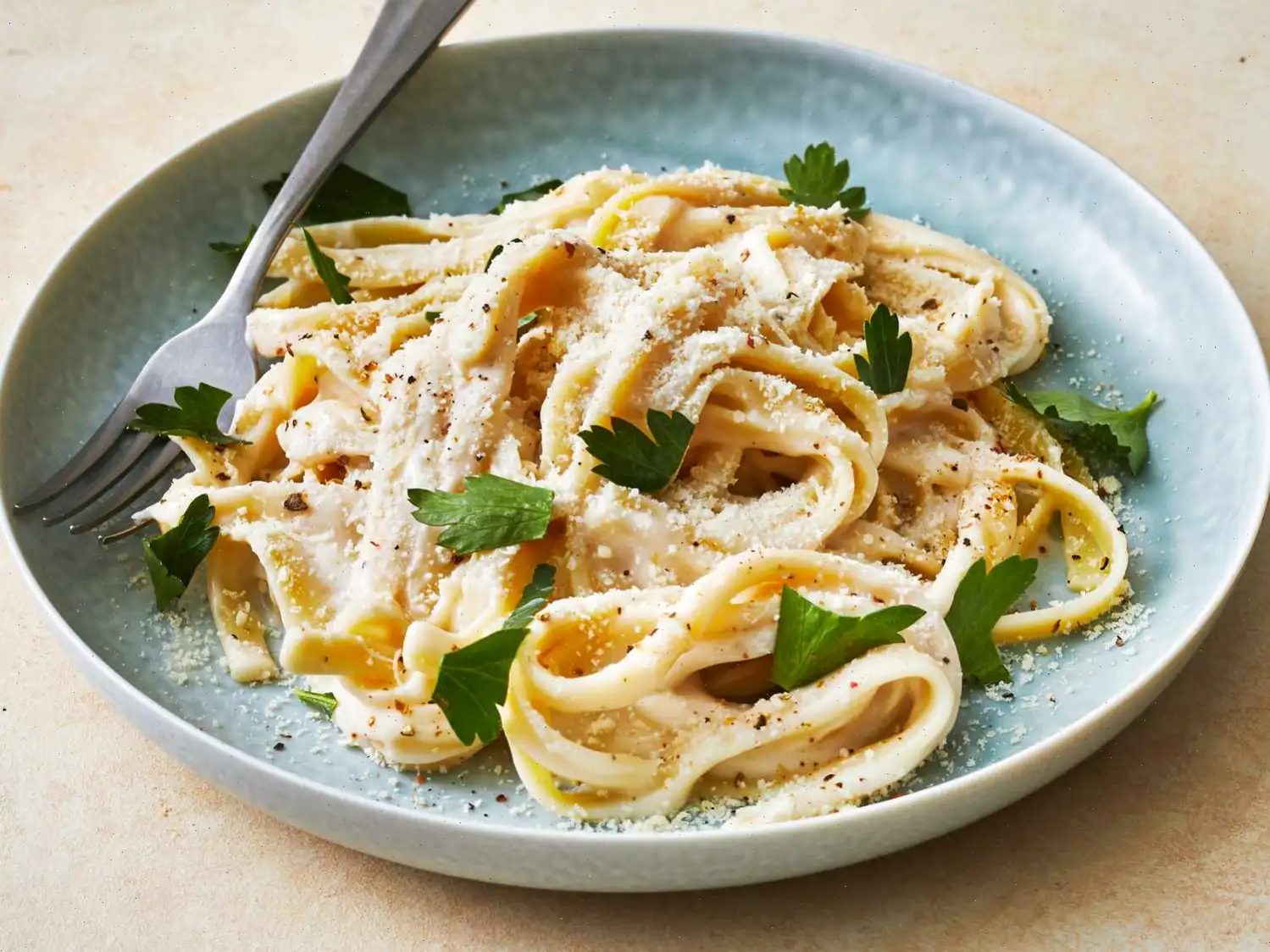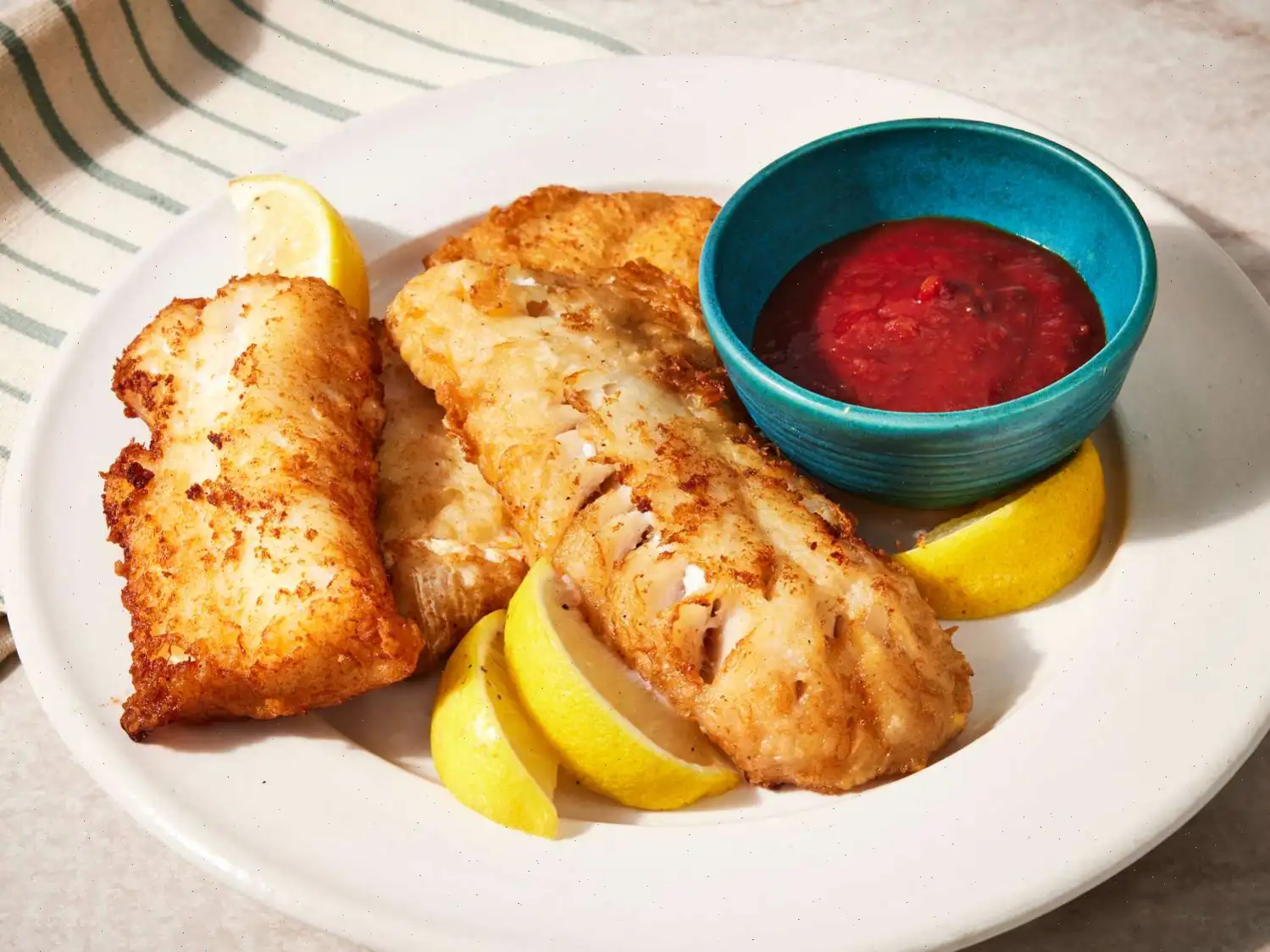
Rough Puff Pastry Recipe
If you love to bake, pastry dough recipes are great ones to return to again and again to try in different ways and perfect over time. A rough puff pastry is essentially a no-frills way to make quick dough. There is little mixing involved, so the process is fairly easy, but you end up with a buttery, flaky pastry. Dough like this is great for hand pies, tarts, or other small baked goods. Add cold cubes of butter and ice-cold water to your dry ingredients to create the dough. Since there are so few ingredients in this recipe, a good butter will really help the flavor. This recipe is similar to how you would make a pie dough, except you fold this rough puff dough over itself again and again, rolling it each time. Thats what helps create the puff part once baked. Dough for pies is also treated more delicately than this puff pastry. There is more care involved when making a pie crust, while this recipe is a rough dough for a reason it does not need to be so perfect.
Taking care of your butter will be the most important part of the recipe. You dont want your butter to melt before it goes in the oven, so its best to cube really cold butter. At different steps in the recipe, cover your dough or wrap it in plastic wrap and store it in the refrigerator for about 20 minutes to keep the butter properly chilled.
Ingredients (Yields 8 Servings)
- 2 cups all-purpose flour, plus more for dusting
- teaspoon kosher salt
- 1 cup cold unsalted butter, cubed
- cup cold water
Directions
- Step 1: Place the flour and salt in the bowl of a stand mixer fitted with a paddle attachment. Add the cold cubed butter and toss with your fingertips until the butter is evenly coated with flour.
- Step 2: Add the cold water to the bowl. Mix on low speed until the dough forms a shaggy mass, about 45 seconds.
- Step 3: Cover the bowl with plastic wrap and refrigerate until the butter is firm but not brittle, about 20 minutes.
- Step 4: Transfer the dough to a floured work surface. Roll it into a -inch-thick rectangle, roughly 10 x 6 inches.
- Step 5: Fold one third of the longer side of the dough over the center third, then fold the final third over the center (like folding a letter). Tightly wrap the folded dough in plastic wrap and refrigerate until chilled, about 30 minutes.
- Step 6: Repeat the process of rolling, folding, and refrigerating 4 more times. Be sure to turn the dough 90 degrees each time before rolling.
- Step 7: After completing the final fold, wrap the dough tightly in plastic wrap and refrigerate until firm, at least 1 hour or up to 2 days.
Cooks Note
If cutting the rough puff into other shapes, be sure to chill before cutting. It will retain its shape better when cutting. You can freeze the dough in a resealable bag for up to 3 months.
Nutrition Facts (per serving)
- Calories: 317
- Total Fat: 23g (30% Daily Value)
- Saturated Fat: 14g (72% Daily Value)
- Cholesterol: 61mg (20% Daily Value)
- Sodium: 83mg (4% Daily Value)
- Total Carbohydrate: 24g (9% Daily Value)
- Dietary Fiber: 1g (3% Daily Value)
- Protein: 3g (7% Daily Value)
- Calcium: 12mg (1% Daily Value)
- Iron: 1mg (8% Daily Value)
- Potassium: 40mg (1% Daily Value)
* Percent Daily Values are based on a 2,000 calorie diet. Your daily values may be higher or lower depending on your calorie needs.
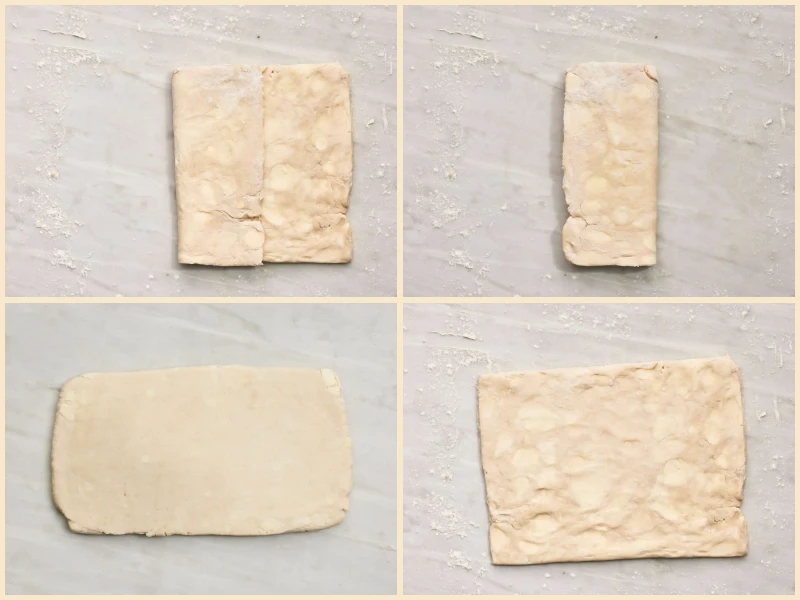
The Story Behind Rough Puff Pastry
Rough puff pastry, often called "quick puff," has its origins in Europe, tracing back to classical French pastry-making techniques. Unlike traditional puff pastry, which can take hours or even days to perfect, rough puff was developed as a time-saving alternative for home bakers and small patisseries. The method allows cooks to achieve the signature flaky layers using minimal rolling and folding, while still preserving the buttery texture that defines classic puff pastry.
Regional Characteristics
While rough puff pastry is widely used across Western cuisine, it has particular prominence in British and American baking. In Britain, it often appears in savory pies, sausage rolls, and tarts, whereas in the United States, it is frequently used for fruit-filled hand pies and turnovers. Its versatility allows for regional adaptations: in France, it might be enriched with extra butter for a richer flavor, while in North America, it is often used for quick weeknight desserts due to its faster preparation time.
Differences from Similar Pastries
Rough puff pastry is sometimes confused with traditional puff pastry or pie dough. The main difference lies in technique: traditional puff pastry requires meticulous layering and resting, producing ultra-thin, crisp layers, while rough puff achieves flakiness with fewer folds and less precision. Compared to pie crust, rough puff contains more butter and undergoes folding, resulting in a lighter, airier texture. Pie crust is more crumbly and tender, ideal for structural support in pies, whereas rough puff excels in delicate, flaky layers that lift and puff during baking.
Typical Occasions and Serving
Rough puff pastry is served in both sweet and savory dishes. It commonly appears in tea-time treats, like fruit tarts, or as the base for quiches and meat pies. Restaurants often use it for vol-au-vents or appetizer shells, while home bakers rely on its simplicity for homemade turnovers and pastries. Because it bakes quickly and yields consistent results, it is especially favored for casual entertaining and festive occasions where a delicate, buttery pastry is desired without the labor-intensive steps of traditional puff pastry.
Interesting Facts
- Despite its name, "rough puff" can produce layers almost as light and flaky as classic puff pastry if folded and chilled correctly.
- The technique of folding butter into dough is centuries old, but rough puff was popularized in the 20th century as a practical home-baking shortcut.
- Chilling between folds is crucial to prevent the butter from melting and merging with the dough, which ensures the characteristic rise and crispness.
- Rough puff pastry freezes exceptionally well, allowing bakers to prepare dough in advance and use it over several months.
- Its adaptability means it can be flavored with herbs, spices, or cheese, making it a versatile base for both sweet and savory creations.
Rough puff pastry embodies the balance between simplicity and elegance in baking. Its quick preparation, combined with buttery, flaky layers, makes it an essential technique for both home cooks and professional chefs seeking efficiency without sacrificing taste.
You can listen to this recipe in AI audio format. Simply click the play button below to listen to the content in a format that suits you best. It’s a great way to absorb information on the go!
FAQ about Rough Puff Pastry Recipe
Comments
James Davis
02/27/2023 01:21:46 PM
I will definitely be making it again.



